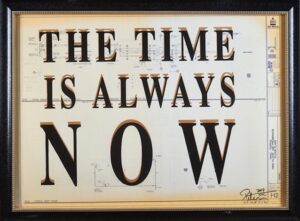I was asked for my opinion this week about the role of craft in advertising, and craft more broadly. Here is what I said…
It’s impossible to buy anything today that doesn’t work and isn’t well made. Consumer appreciation of design and production has evolved to the point whereby making junk just isn’t profitable anymore (some manufacturers tried it in the past but internet-enabled consumer power has overtaken them). We expect things to be well made, not fall apart, keep on working. You can buy quality stuff in $2 shops today. Apple and Nike have been among the most visible design-led companies, though most consumers don’t give a moment’s thought to the people who are giving the prime of their lives in massive far-off factories to assemble these products. (These craftspeople should be paid sustainable wages and have better working conditions, and we as consumers should foot the bill and feel happy about doing so).
Craft movements are alive and well throughout the world. From eat-local artisan foodies (Brooklyn NYC has been called the “Silicon Valley of food”) to the high-end homesteaders who pay $58 for a garden hose and $70 for a Williams-Sonoma vintage watering can with inbuilt scuffs and scratches. Monocle magazine is awash with crafted bespoke products such as hand-sewn Oliver Spencer designer shoes named for the native Passamaquoddy Indians of Maine, to Young & Norgate contemporary handmade furniture in American walnut and Oyuna scarves made from Mongolian cashmere, through to wasabi grown in the English countryside.
I am not sure if the craft levels in advertising are any more passionate than they were when I started in business. Typographers, for example, are as obsessive today as they were 45 years ago, only the equipment has gotten exponentially better. My benchmark for craft in advertising is this: whether it’s a CGI-laden Super Bowl spot or a piece of laundry packaging, does the work convey Mystery, Sensuality and Intimacy? People can instantly tell. Design has become democratic and visual literacy is widespread. An ordinary average person can walk through the contemporary art wing of the Met in New York and intuitively tell that the Rothko is colorful but ho-hum, the Jasper Johns is good but not great, the Rauschenberg is so-so but the Pollock (Autumn Rhythm Number 30) is absolutely drop-dead stunning.
This says to me that craft is all very well but aesthetics still rule the day. Humans are visual thinkers first and foremost. We remember 20% of what we read and 80% of what we see, which is a constant battle with clients who want to cram more information about product benefits into a communication thinking this will be more persuasive. It won’t be. We respond emotionally to what we see, hear, smell, taste – and if we’re fortunate, the shopper will pick the product up and touch it. This is when craft kicks in – how does it feel, is it well made, is it good to handle?
Pictured above:
Autumn Rhythm (Number 30), 1950
Jackson Pollock (American, 1912–1956)
Enamel on canvas
105 x 207 in. (266.7 x 525.8 cm)
George A. Hearn Fund, 1957 (57.92)
© 2011 The Pollock-Krasner Foundation / Artists Rights Society (ARS), New York
Metropolitan Museum of Art





